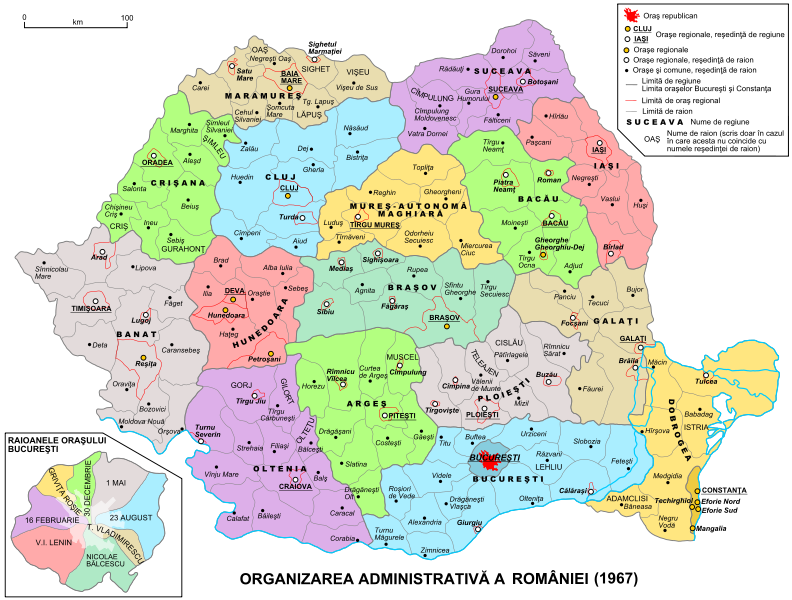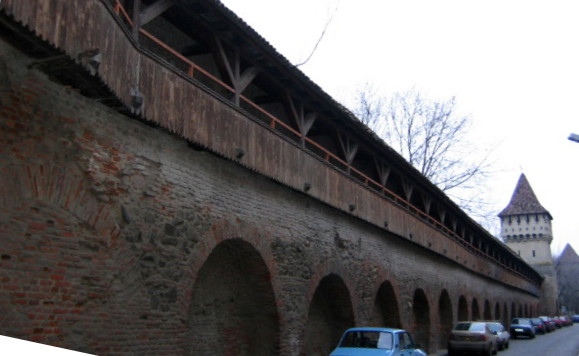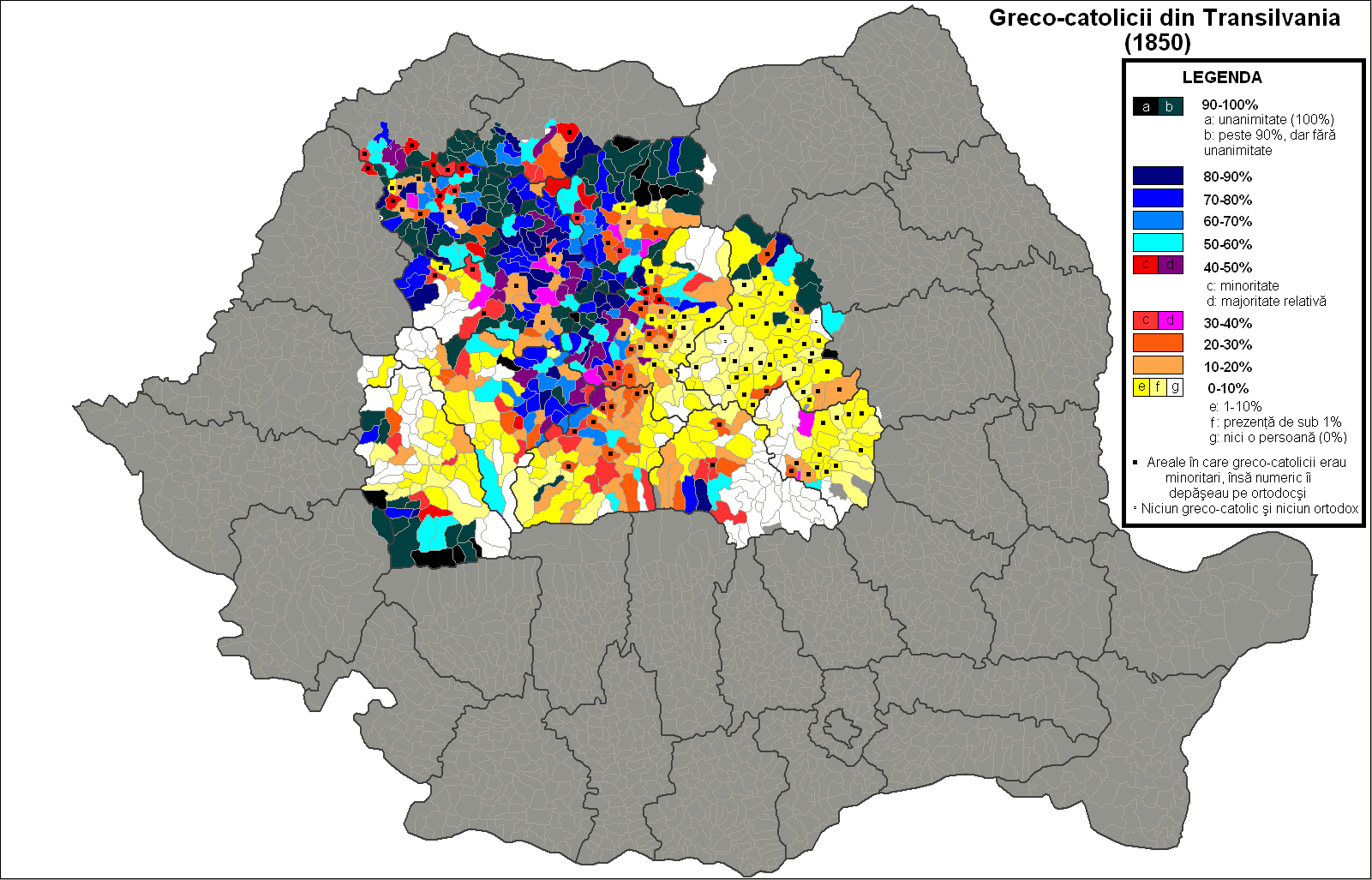|
Mediaș
Mediaș (; , , Transylvanian Saxon dialect, Transylvanian Saxon: ''Medwesch''/''Medveš''/''Medwisch'', ) is the second largest municipiu, town and municipality in Sibiu County, Transylvania, central Romania. Geography Mediaș is located in the middle basin of Târnava Mare River, at from Sighișoara and from Blaj. The health resort Bazna, officially recognized for the first time in 1302, is from Mediaș. The health resort offers mineral water springs, rich in salts, mineral mud and a special type of salt, called "Bazna salt". The distance between Mediaș and the county's residence Sibiu is . The city administers one village, Ighișu Nou (''Eibesdorf''; ''Szászivánfalva''). History The first signs of human communities in the area are thought to be from the middle Neolithic period. The name of the city comes from the Hungarian word meggy (sour cherry). The Romanian name originates in the German version, which comes from the Hungarian name (Medgyes). In the 13th ce ... [...More Info...] [...Related Items...] OR: [Wikipedia] [Google] [Baidu] |
Transylvania
Transylvania ( or ; ; or ; Transylvanian Saxon dialect, Transylvanian Saxon: ''Siweberjen'') is a List of historical regions of Central Europe, historical and cultural region in Central Europe, encompassing central Romania. To the east and south its natural border are the Carpathian Mountains and to the west the Apuseni Mountains. Broader definitions of Transylvania also include the western and northwestern Romanian regions of Crișana and Maramureș, and occasionally Banat. Historical Transylvania also includes small parts of neighbouring Western Moldavia and even a small part of south-western neighbouring Bukovina to its north east (represented by Suceava County). Transylvania is known for the scenery of its Carpathian landscape and its rich history, coupled with its multi-cultural character. It also contains Romania's second-largest city, Cluj-Napoca, and other very well preserved medieval iconic cities and towns such as Brașov, Sibiu, Târgu Mureș, Bistrița, Alba Iuli ... [...More Info...] [...Related Items...] OR: [Wikipedia] [Google] [Baidu] |
Transylvanian Saxons
The Transylvanian Saxons (; Transylvanian Saxon dialect, Transylvanian Saxon: ''Siweberjer Såksen'' or simply ''Soxen'', singularly ''Sox'' or ''Soax''; Transylvanian Landler dialect, Transylvanian Landler: ''Soxn'' or ''Soxisch''; ; seldom ''sași ardeleni/transilvăneni/transilvani''; ) are a people of mainly Germans, German ethnicity and overall Germanic peoples, Germanic origin—mostly Luxembourgers, Luxembourgish and from the Low Countries initially during the medieval Ostsiedlung process, then also from other parts of present-day Germany—who settled in Transylvania in various waves, starting from the mid and mid-late 12th century until the mid 19th century. The first ancestors of the Transylvanian 'Saxons' originally stemmed from Flanders, County of Hainaut, Hainaut, Landgraviate of Brabant, Brabant, Liège, County of Zeeland, Zeeland, Moselle, Duchy of Lorraine, Lorraine, and County of Luxembourg, Luxembourg, then situated in the north-western territories of the Holy R ... [...More Info...] [...Related Items...] OR: [Wikipedia] [Google] [Baidu] |
Sibiu County
Sibiu County () is a county () of Romania, in the historical region of Transylvania. Its county seat () is the namesake town of Sibiu (). Name In Hungarian, it is known as ''Szeben megye'', and in German as ''Kreis Hermannstadt''. Under the Kingdom of Hungary, a county with an identical name (Szeben County, ) was created in 1876. Demographics At the 2021 census, Sibiu county had a population of 388.326 residents and a population density of 71.48/sq.km(27,59sq.mi) At the 2011 Romanian census, 2011 census, the county has the following population indices: * Romanians – 91.25% (or 340,836) * Romani people in Romania, Romani – 4.76% (or 17,901) * Hungarians in Romania, Hungarians – 2.89% (or 10,893) * Germans of Romania, Germans (Transylvanian Saxons) – 1.09% (or 4,117) * Minorities of Romania, Other – 0.1% (or 640) At the 2021 Romanian census, 2021 census, the county has the following population indices: * Romanians – 93.36% (or 313,118) * Romani people in ... [...More Info...] [...Related Items...] OR: [Wikipedia] [Google] [Baidu] |
Târnava-Mare County
Târnava-Mare County is one of the historical counties of the Kingdom of Romania, in the historical region of Transylvania. The county seat was Sighișoara. Yet the biggest city in 1930 was Mediaș Geography The county covered 2836 km2 and was located in the central part of Greater Romania, in the south of Transylvania. Its territory currently belongs to the counties of Sibiu, Mureș and Brașov. It was bordered to the north by the counties of Odorhei and Târnava-Mică, to the south by the counties of Sibiu and Făgăraș, and to the east by Brașov County. The county was disbanded with the administrative reform of 6 September 1950. History Prior to World War I, the territory of the county belonged to Austria-Hungary and was identical with the Nagy-Küküllő County of Hungary. The territory of Târnava-Mare County was transferred to Romania from the Kingdom of Hungary as successor state to Austria-Hungary in 1920 under the Treaty of Trianon. After the administrative uni ... [...More Info...] [...Related Items...] OR: [Wikipedia] [Google] [Baidu] |
Stalin Region
Regiunea Stalin (Stalin Region) was one of the administrative divisions of the People's Republic of Romania. It was established in 1950, in the Soviet style of territorial organization, and was named after Joseph Stalin. Its name was changed to Brașov Region in 1960, and it was disestablished in 1968. History In 1950, the capital of the region was Orașul Stalin (''Stalin City'', now Brașov) and its territory comprised an area similar to what are nowadays the eastern part of Brașov County, together with Covasna County and part of Harghita County. Initially, the Stalin Region comprised 6 raions: Ciuc, Odorhei, Racoș, Sfântu Gheorghe, Stalin, and Târgu Secuiesc. In 1952, the Ciuc, Odorhei, Sfântu Gheorghe, and Târgu Secuiesc raions were transferred to the newly established Magyar Autonomous Region, while the raions Sibiu, Făgăraș, Mediaș, Agnita, Sighișoara, and Târnăveni were included in the Stalin Region. In 1960, the region was renamed Brașov Region, while ... [...More Info...] [...Related Items...] OR: [Wikipedia] [Google] [Baidu] |
Bazna
Bazna (; Transylvanian Saxon dialect: ''Baußen''; ) is a commune located in Sibiu County, Transylvania, Romania. It is composed of three villages: Bazna, Boian (''Bonnesdorf''; ''Bonnesdref''; ''Alsóbajom'') and Velț (''Wölz''; ''Welz''; ''Velc'' or ''Völc''). The route of the Via Transilvanica long-distance trail passes through the village of Bazna. Geography It lies northeast of Mediaș, within the catchment area of the Târnava Mică River. History Settled by Transylvanian Saxons in the 13th century, in the late 1870s the Bazna area became part of Austria-Hungary's Kis-Küküllő County, in the Dicsőszentmárton subdivision. Following the Union of Transylvania with Romania in 1918, its villages became part of the Kingdom of Romania. Demographics At the 2011 census, 66.7% of inhabitants were ethnic Romanians, 29.7% Roma, 2.6% Hungarians and 0.8% Germans. At the 2002 census, 86.6% were Romanian Orthodox, 4% Greek-Catholic, 3.6% Pentecostal, 2.2% Reformed, 1.4% B ... [...More Info...] [...Related Items...] OR: [Wikipedia] [Google] [Baidu] |
Biertan
Biertan (; Transylvanian Saxon dialect: Birthälm/Bierthalmen/Bierthalm; ) is a commune in Sibiu County, Transylvania, Romania. The commune is composed of three villages: Biertan, Copșa Mare (; ), and Richiș (; ), each of which has a fortified church. Biertan is one of the most important Saxon villages with fortified churches in Transylvania, having been on the list of UNESCO World Heritage Sites since 1993. The Biertan fortified church was the seat of the Evangelical Lutheran Bishop in Transylvania between 1572 and 1867. The route of the Via Transilvanica long-distance trail passes through all three villages in the commune. Geography The commune is situated on the Transylvanian Plateau, at an altitude of , on the banks of the rivers Biertan and Vale. It is located in the north of Sibiu County, east of Mediaș and northeast of the county seat, Sibiu. History The first documentary testimony about the village dates from 1283 in a document about the taxes pa ... [...More Info...] [...Related Items...] OR: [Wikipedia] [Google] [Baidu] |
Union Of Transylvania With Romania
The union of Transylvania with Romania was declared on by the assembly of the delegates of ethnic Romanians held in Alba Iulia. The Great Union Day (also called ''Unification Day''), celebrated on 1 December, is a Public holidays in Romania, national holiday in Romania that celebrates this event. The holiday was established after the Romanian Revolution, and celebrates the unification not only of Transylvania, but also of Bessarabia and Bukovina and parts of Banat, Crișana and Maramureș with the Kingdom of Romania, Romanian Kingdom. Bessarabia and Bukovina had joined with the Kingdom of Romania earlier in 1918. Causes and leading events *August 17, 1916: Romania signed a Treaty of Bucharest, 1916, secret treaty with the Allies of World War I, Entente Powers (United Kingdom, France, Italy and Imperial Russia, Russia), according to which Transylvania, Banat, and Partium would become part of Romania after World War I if the country entered the war. The planned border follow ... [...More Info...] [...Related Items...] OR: [Wikipedia] [Google] [Baidu] |
Municipiu
A municipiu (from Latin ''municipium''; English: municipality) is a level of administrative subdivision in Romania and Moldova, roughly equivalent to city in some English-speaking world, English-speaking countries. In Romania, this status is given to towns that are large and urbanized; at present, there are 103 ''municipii''. There is no clear benchmark regarding the status of ''municipiu'' even though it applies to localities which have a sizeable population, usually above 15,000, and extensive urban infrastructure. Localities that do not meet these loose guidelines are classified only as towns (''orașe''), or if they are not urban areas, as Commune in Romania, communes (''comune''). Cities are governed by a mayor and local council. There are no official administrative subdivisions of cities even though, unofficially, municipalities may be divided into quarters/districts (''cartiere'' in Romanian language, Romanian). The exception to this is Bucharest, which has a status simila ... [...More Info...] [...Related Items...] OR: [Wikipedia] [Google] [Baidu] |
Romania
Romania is a country located at the crossroads of Central Europe, Central, Eastern Europe, Eastern and Southeast Europe. It borders Ukraine to the north and east, Hungary to the west, Serbia to the southwest, Bulgaria to the south, Moldova to the east, and the Black Sea to the southeast. It has a mainly continental climate, and an area of with a population of 19 million people. Romania is the List of European countries by area, twelfth-largest country in Europe and the List of European Union member states by population, sixth-most populous member state of the European Union. Europe's second-longest river, the Danube, empties into the Danube Delta in the southeast of the country. The Carpathian Mountains cross Romania from the north to the southwest and include Moldoveanu Peak, at an altitude of . Bucharest is the country's Bucharest metropolitan area, largest urban area and Economy of Romania, financial centre. Other major urban centers, urban areas include Cluj-Napoca, Timiș ... [...More Info...] [...Related Items...] OR: [Wikipedia] [Google] [Baidu] |
Sibiu
Sibiu ( , , , Hungarian: ''Nagyszeben'', , Transylvanian Saxon: ''Härmeschtat'' or ''Hermestatt'') is a city in central Romania, situated in the historical region of Transylvania. Located some north-west of Bucharest, the city straddles the Cibin River, a tributary of the Olt River. Now the seat of Sibiu County, between 1692 and 1791 and 1849–65 Sibiu was the capital of the Principality of Transylvania. Until 1876, the Hecht hause in Sibiu served as the seat of the Transylvanian Saxon University. Nicknamed ''The Town with Eyes'' for the eyebrow dormers on many old buildings, the town is a popular tourist destination. It is known for its culture, history, cuisine, and architecture. In 2004, its historical center was added to the tentative list of UNESCO World Heritage Sites. Sibiu was subsequently designated the European Capital of Culture in 2007, along with Luxembourg City. One year later, it was ranked "Europe's 8th-most idyllic place to live" by ''Forbes''. Sibi ... [...More Info...] [...Related Items...] OR: [Wikipedia] [Google] [Baidu] |
Romanian Church United With Rome, Greek-Catholic
The Romanian Greek Catholic Church or Romanian Church United with Rome is a ''sui iuris'' Eastern Catholic Church, in full union with the Catholic Church. It has the rank of a Major Archbishop, Major Archiepiscopal Church and it uses the Byzantine Rite, Byzantine liturgical rite in the Romanian language. It is part of the Major Archiepiscopal Churches of the Catholic Church that are not distinguished with a patriarchal title. Cardinal Lucian Mureșan, Archbishop of Greek Catholic Archdiocese of Făgăraș and Alba Iulia, Făgăraș and Alba Iulia, has served as the head of the Romanian Greek-Catholic Church since 1994. On December 16, 2005, as the ''Romanian Church United with Rome'', the Greek-Catholic church was elevated to the rank of a Major Archiepiscopal Church by Pope Benedict XVI, with Lucian Mureșan becoming its first major archbishop. Mureşan was made a cardinal, at the papal consistory, consistory of February 18, 2012. Besides the Archeparchy of Făgăraș and Alba ... [...More Info...] [...Related Items...] OR: [Wikipedia] [Google] [Baidu] |







